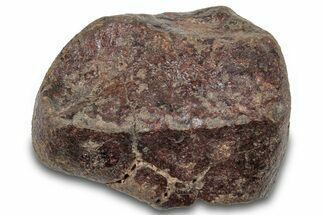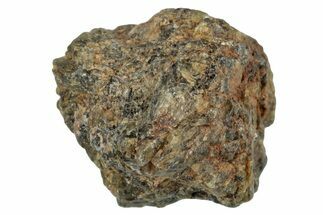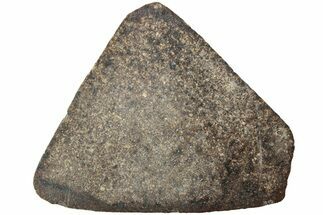This Specimen has been sold.
3.6" L-Melt Chondrite Meteorite Slice (49.2 g) - NWA 13277
This is a 3.6" wide (49.2 grams), slice of the chondrite meteorite, NWA 13277.
NWA 13277 Meteorite
This is a real treat! This beautiful chondrite was purchased by Mark Lyon in 2020 from a Moroccan dealer, and Lyon today holds the entirety of the mass save a small portion held at the Burke Museum at the University of Washington.
This is a L-melt chondrite displaying an igneous texture, consisting primarily of olivine and pyroxene. This meteorite contains almost no metal, save one occurrence of kamacite in a large triolite grain. A beautiful, out-of-this-world specimen to take home today!
Meteoritical Bulletin: Entry for Northwest Africa 13277
This is a real treat! This beautiful chondrite was purchased by Mark Lyon in 2020 from a Moroccan dealer, and Lyon today holds the entirety of the mass save a small portion held at the Burke Museum at the University of Washington.
This is a L-melt chondrite displaying an igneous texture, consisting primarily of olivine and pyroxene. This meteorite contains almost no metal, save one occurrence of kamacite in a large triolite grain. A beautiful, out-of-this-world specimen to take home today!
Meteoritical Bulletin: Entry for Northwest Africa 13277
About Chondrites
A chondrite is a stony (non-metallic) meteorite that has not been modified by either melting or differentiation of the parent body. Chondrites are formed when various types of dust and small grains in the early Solar System accreted to form primitive asteroids. Some such bodies are captured in the planet’s gravity well and pulled to the surface. They are by far the most common type of meteorite, representing about 86 percent of all meteorites that have fallen to Earth.
Prominent among the components present in chondrites are the enigmatic chondrules, millimeter-sized spherical objects that originated as freely floating, molten or partially molten droplets in space; most chondrules are rich in the silicate minerals olivine and pyroxene. Chondrites also contain particles of various metals such as nickel, iron, and aluminum. These formed at the very beginning of the solar system and aggregated over time: they are the oldest rocks known on Earth!
Chondrites are divided into about fifteen distinct groups on the basis of their mineralogy, bulk chemical composition, and oxygen isotope compositions. The various chondrite groups likely originated on separate asteroids or groups of related asteroids. Each chondrite group has a distinctive mixture of chondrules, refractory inclusions, matrix (dust), characteristic chondrule sizes, and other components. Other ways of classifying chondrites include weathering and shock. The L chondrite group is the most common of these.
A chondrite is a stony (non-metallic) meteorite that has not been modified by either melting or differentiation of the parent body. Chondrites are formed when various types of dust and small grains in the early Solar System accreted to form primitive asteroids. Some such bodies are captured in the planet’s gravity well and pulled to the surface. They are by far the most common type of meteorite, representing about 86 percent of all meteorites that have fallen to Earth.
Prominent among the components present in chondrites are the enigmatic chondrules, millimeter-sized spherical objects that originated as freely floating, molten or partially molten droplets in space; most chondrules are rich in the silicate minerals olivine and pyroxene. Chondrites also contain particles of various metals such as nickel, iron, and aluminum. These formed at the very beginning of the solar system and aggregated over time: they are the oldest rocks known on Earth!
Chondrites are divided into about fifteen distinct groups on the basis of their mineralogy, bulk chemical composition, and oxygen isotope compositions. The various chondrite groups likely originated on separate asteroids or groups of related asteroids. Each chondrite group has a distinctive mixture of chondrules, refractory inclusions, matrix (dust), characteristic chondrule sizes, and other components. Other ways of classifying chondrites include weathering and shock. The L chondrite group is the most common of these.
TYPE
Ordinary Chondrite (L-Melt)
LOCATION
Northwest Africa
SIZE
3.6 x 2.67", 0.16" thick, 49.2 grams
CATEGORY
ITEM
#263246
 Reviews
Reviews












